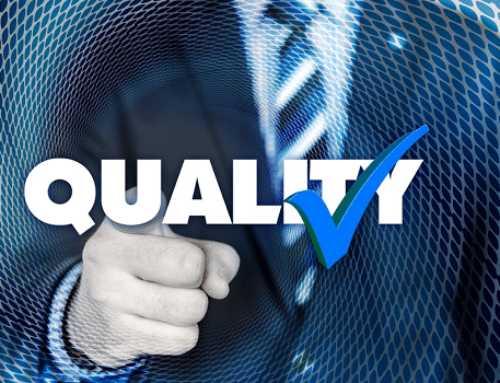The purpose of a security audit is to ensure the effectiveness of the various measures implemented within the company. It reveals the discrepancies between the applied measures and those normally required to manage the organization’s risks. It should be noted that an audit is generally carried out by a competent and independent person or team. The independence of this mission ensures that the work will be conducted in a professional and objective manner.
What is IT security audit?
The security audit can be defined as a diagnosis of the security status of your information system. This helps identify any flaws or malfunctions that could jeopardize your business. This approach which is supposed to be periodic allows you to know your company’s level of security and to assess the degree of its compliance with your security policy.
It should be noted that conducting regular security audits is the key to securing your organization.

Why is security audit important?
You’re probably wondering why it is essential to conduct a security audit. There are a number of essential and varied reasons for this:
- Receiving a certificate
- Detecting improvement opportunities
- Identifying your strengths
- Carrying out control or inspection
- Identifying and correcting non-conformities
- Identifying training needs
- Inspecting the efficiency of your system
- Identifying risks and providing feedback to management
- Securing stakeholders satisfaction
As such we can say that security audits are used to assess the effectiveness of an organization’s internal controls. The introduction of an audit plan helps companies to obtain objective information on operations and maintain an effective system of internal controls. In addition, it identifies the risks of fraud and asset misappropriation and ensures conformance with relevant laws or regulations.
Security audit process
Now that you are convinced of the importance of carrying out a security audit, you need to think about the procedure you are going to introduce. First of all, you need to identify the scope of the audit –its scope and its limitations. Then, you need to choose the audit criteria according to which this control will be carried out.
Next, you start gathering evidence by observing activities and reviewing existing documents. Once this evidence is collected and assessed, you will be able to draw conclusions based on your findings.
It is recommended that a qualified audit manager be appointed and that the team be set up to assist him/ her in carrying out the audit. At this stage, developing a checklist is a good practice.
GMP audit
Good manufacturing practices (GMP) audits are tools used by manufacturers to ensure that pharmaceutical, food, medical and cosmetic products are of consistent quality. They must also comply with manufacturing standards. By conducting frequent GMP audits, a company protects itself from product safety issues and legal and regulatory risks.
Note that GMP compliance checklists are used to asses a company’s compliance with manufacturing protocols. As a result, you can use this checklist to visit your facilities and check the manufacture of the 8 relevant systems:
- Buildings and installations
- Materials management
- Quality control systems
- Manufacturing
- Packaging and identification labeling
- Quality management systems
- Staff and training
- Purchases and customer service
IT security audit
IT audit mainly consists in evaluating the company’s IT system. It’s an inventory of all or part of your IT system. Its purpose is to study and assess risks or areas for improvement.
The IT audit can explore information systems, networks, apps or IT functions. In concrete terms, it enables you to map all or part of your digital or IT structure in order to draw up recommendations for development based on your objectives, means and needs:
- Security
- Data protection
- Compliance with laws
- Efficiency
- Productivity
As a result, this IT combines both technical control and consulting to ensure that your company productivity and efficiency are improved.
Cyber security audit
Cyber security audit is a method of monitoring and verifying that your company has security policies in place to deal with all possible risks.
An audit can be carried out by your company’s employees to prepare for the arrival of an external organization.
If your company is subject to regulatory requirements such as the UE’s General Data Protection Regulation (GDPR), the Payment Card Industry Data Security Standard (PC DSS) or ISO 27001, you’ll need an external auditor to verify compliance and obtain certification. This type of security increases the security level of IT systems and prevents any intrusion attempts.
It should be noted that cyber security audit is different from cyber security assessment. This is because it consists of a checklist that verifies that you have considered a specific risk. Whereas an assessment tests the risk to see to what extent it should implemented.
Security audit
Security audit is essentially an examination of weaknesses and flaws of an entity (head office, public building, company premises…) in terms of physical security (outside the IT field). The purpose of this audit is to identify the risks inherent in your activity and take preventive measures to protect yourself from it. This prevention is carried out in a technical and structural manner.
The purpose of a security audit is to:
- Draw up an overview of the situation and threats from a global perspective (in terms of location)
- Identify architectural-mechanical (buildings), technological and organizational weaknesses and flaws. Review fences and gates, video surveillance, detection and alarms.
- Provide recommendations to remedy the shortcomings found with an order of priority for implementation.
QSE audit
QSE audits are control or verification processes that certify quality and compliance with standards of a company’s activities. They place emphasis on product quality. Quality audit is at the very heart of the integrated management system. It ensures compliance with QSE or Quality Safety and Environment standards.
As a basis for verification, the audit is based on a reference framework. It can be an internal repository, a standard (French or European) or regulatory data. As a result, a product is considered to be of quality when the QSE audit can inspect all the conditions defined by a standard or label. Quality standards include:
- ISO 9001
- Industry quality standards: ISO 15 189, ISO 27001, HAS…
- Internal repositories which may vary from one company to another
QSE quality audits of a product or service can prove that its production, materials, performance and robustness perfectly meet product audit criteria. They are usually carried out by a QSE manager. In addition, they are based on customer requirements and technical progress.

About Picomto
Picomto is a digital solution that helps companies carry out internal audits. Thanks to this tool, they can create checklists and verify their work procedures.




Leave A Comment